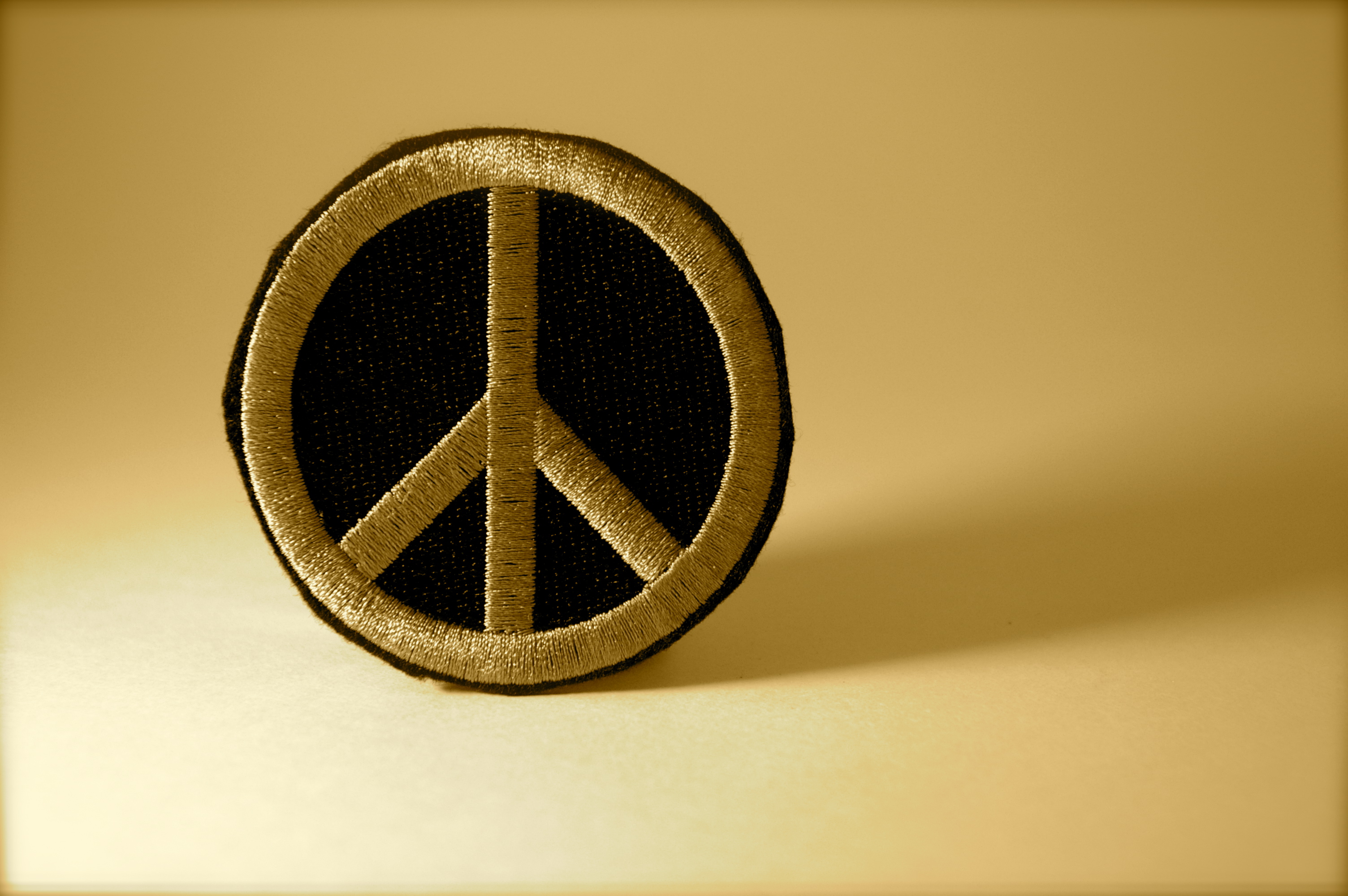Remarks delivered on September 21 by Executive Director Jennifer Copeland at a press conference marking the International Day of Peace.
Words make a world. The words we use become embedded in the ways we think about the world around us. So, we have bullet points, target dates, and killer ideas. We shoot emails, fire off memos, and kill two birds with one stone.
Using words that connote violence is second nature to us even when the sentiments we’re expressing are every day normal—sending an email. But when every day normal is described with violent language, it will soon be that violence is every day normal. If the words acceptable for normal conversation are words of violence, then we are making a world where violence is acceptable.
I don’t believe that ushering in peace is as simple as choosing different words. But I do believe the words describe the world we’re willing to settle for. And we have settled for a world that not only allows violence, but often encourages it. We throw up our hands saying, “this is just the way it is.” This may be the way it is, but this is not the way it has to be. We can find different language and with the different language we can find different behavior and with different behavior we can generate a different world.
We all remember the Amish schoolhouse shooting in 2006. We all also remember the Amish community’s response to that shooting. And we remember it because it was different from what always happens, it was different from what we expected. The Amish offered gestures of reconciliation to the shooter’s family. There were no calls for revenge; no pledges of retaliation. There was much lamenting and sorrow for sure, but no resort to violence, even state-sanctioned violence.
What if that was the norm? What if non-violence was normal and violence was the exceptional and unacceptable response to events around us? What if violence was shocking and confusing because that’s not what people do? What would that world look like and what would our normal vocabulary be if we didn’t always default to bullet points.
As we begin to imagine that possibility, let me quickly add, non-violence is not for the faint of heart. In fact, it takes a lot more creativity and fortitude to forgo violence than it does simply to lash out. We have to be trained to be non-violent. People who engage in non-violent protest spend months conditioning themselves not to be violent because it is our natural inclination to react violently when we are afraid or offended.
Here’s a perfect example from the Gospel of Luke in the Christian scriptures. The story goes that when “the officers of the temple police” came out with swords and clubs to arrest Jesus, someone who was with him took out a sword and “struck the servant of the high priest and cut off his right ear.” A violent response to a violent situation. From there, it should have been game on, like the street scene from West Side Story. The Gethsemene brawl. Instead, the Gospel of Luke tells us, “Jesus said, ‘No more of this!’ and touched his ear and healed it” (Luke 22:51). It takes courage and creativity not to respond violently. But it works.
- To avoid paying the British tax on salt, Gandhi walked 240 miles over the course of 24 days to get his own salt, picking it up with his own hands off the beach. He was joined by scores of people along the way and the Salt March started the process of independence for India.
- To protest racial discrimination, King organized the Montgomery bus boycott to bring economic pressure on the city transportation system and this led to the Civil Rights Act of 1964 and the Voting Rights Act of 1965.
- “People power,” as they called it in the Philippines, brought down the oppressive Marcos dictatorship.
In each of these cases, the protestors would have been squashed in a matter of days, maybe hours, by their oppressors. In some sense, they were forced to adopt non-violence to get what they wanted because they could never have prevailed in armed conflict. But they did get what they wanted. These outnumbered, overpowered, underwhelming protestors prevailed.
Imagine what powerful people and powerful nations could achieve if we chose not to react with violence every time we didn’t get our way. What would the world look like if we beat our swords into plow shares and our spears into pruning hooks and said, no more of this? What if we took seriously the Mennonite poster that suggests: Let the Christians of the world agree that they will not kill each other.
Christianity is a religion of peace. No really it is. The crusades—a horrible, heretical act perpetrated by kings and clergy. Jesus never hit anybody, but he used some very creative ways to make his point. And when things were wrong, he got angry about it. But he never hit anybody, much less killed them.
I know we’re not all Christians gathered here today, but Christianity is a pretty big group around the world. If that group would take itself seriously, outcomes would be different. If all of us will choose our words carefully, outcomes will be different.
Language is one place we can begin to change the world we are making. If we take control of the words we use, can’t we also take responsibility for the actions we perform? Speak peacefully. Act peacefully. Live in a peace-filled world. Thank you.

